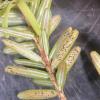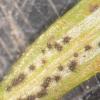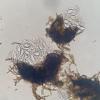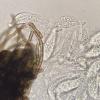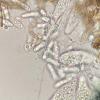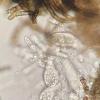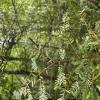
12-11-2025 09:25
 Viktorie Halasu
Viktorie Halasu
Hello, I need help with a pale terrestric Pseudom

11-11-2025 20:16
Bohan JiaHi, lastly I have found these tiny yellow decayin

09-11-2025 13:20
Hello.A tiny ascomycete, appearing as erupting gra

08-11-2025 00:29
 Francois Guay
Francois Guay
I found this species in Quebec, Canada, on herbace

04-11-2025 09:07
Hello.A suspected Hymenoscyphus sprouting on a thi
Phaeocryptopus?
Guy Buddy,
14-06-2022 18:22
Could this be a species of Phaeocryptopus? P. nudus has been reported on this host before, but I cannot find much info on it. The tree was experiencing a needle cast of last years growth, Fabrella tsugae was also found on the same branch. No amyloid reaction in Lugols. All micro taken in H2O. Spores measure 8-10 x 4-5 um.
Location: Cranberry Wilderness, West Virginia, USA
Host: Tsuga canadensis
Thanks!
Guy Buddy,
17-06-2022 03:46
Re : Phaeocryptopus?
Looking closer the ascomata do not appear to be erupting from the stomata. But the bitunicate asci and spores look promising for Venturiaceae.

